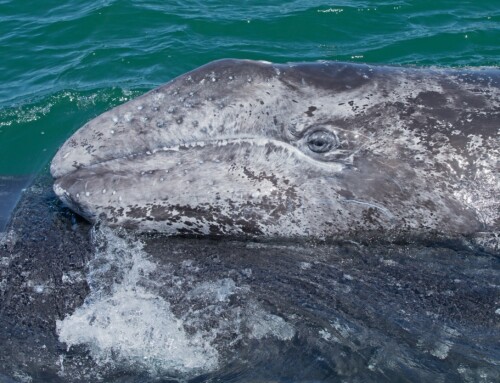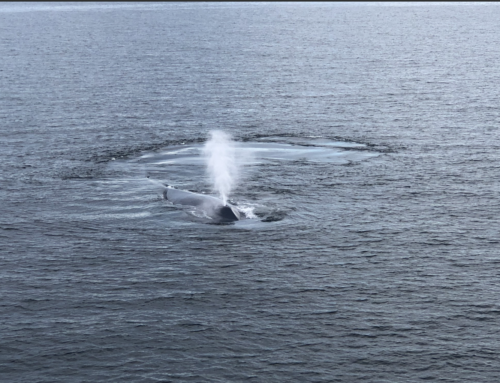Ecologist Paul Jones of the Water Division’s Wetlands Office has been awarded the Edward T. “Red” Heinen Award, EPA’s most prestigious national award for superior work protecting wetlands. The annual award, voted on by Regional wetlands managers across the country, acknowledges individuals who are a source of inspiration to others in the program, and whose work and attitude best contributes to our environmental and public service goals.
Division Director Alexis Strauss, in nominating Paul for the award, said he “personifies the criteria for this award: his program knowledge and skills are of national stature, his public service ethic is evident daily, and he has been and remains an exceptional role model for the next generation of wetlands professionals.”
After working as a carpenter in the Bay Area and sailing around the world, Paul got his master’s degree in ecology, with an emphasis on birds, from San Francisco State University in the mid-1980s. He then worked at Genentech until joining Region 9’s wetlands program in 1990.
Wetlands are federally protected in several ways, including grants programs and regulatory prohibitions against their unnecessary destruction (Section 404 of the Clean Water Act). No property owner, including government agencies, can fill or eliminate wetlands covered by the CWA without a permit from the U.S. Army Corps of Engineers. EPA co-implements the program by ensuring compliance with the standards EPA wrote that guide permitting, and by taking formal enforcement actions against unpermitted wetlands fill. The program is always controversial because of its direct link to private property rights. In the arid Western States, including California, controversy is often even greater because some wetlands, such as vernal pools, may be dry for most of the year, making their legal coverage less certain.
Being effective in the wetlands program is thus not a job for the faint of heart, or those without the scientific chops to go toe-to-to with powerful opposing interests. In 1995, Simpson Timber Company used heavy equipment to rip up clay subsoil across a 16-square mile grassland dotted with 950 acres of vernal pools and intermittent creeks. Their eucalyptus tree plantation destroyed an unusually large, contiguous block of these rare wetlands in the northern Sacramento Valley. Paul’s reconnaissance mapped these wetlands, and resulted in an enforcement settlement permanently protecting nearly six square miles of wetlands in the area.
Rich Sumner of EPA’s Western Ecology Division Lab in Corvallis, Oregon was one of several others who seconded the nomination. Says Sumner, “The big news for this past year is that Paul was successful at working with the
More than an effective enforcer, Paul also wears a “white hat” for EPA in the community. From 1996 to 2001, he worked on a multi-agency task force that designed and permitted the innovative Napa River Flood Control Project. Paul helped incorporate into the project more than a square mile of diked land just south of Napa for restoration to tidal wetlands, and helped secure funding to buy the property and restore the wetlands. Today, they’re inundated by tides twice daily and teeming with water birds. The flood control project, now complete, has prevented major rainstorms from flooding downtown Napa (as they did routinely for decades), while restoring riparian habitat for fish and wildlife.
During the late 1990s, Paul was an organizing member of the EPA team that built state and tribal capacity to monitor and assess wetland health across California. He gathered lessons learned from different parts of the country and applied them to California, working with a network of scientists and program practitioners. This was the foundation for the California Rapid Assessment Method (CRAM), which provides a scientifically rigorous, standardized, and cost-effective way to assess wetland condition throughout the state.
Paul also helped develop Wetland Tracker, and organized the California Wetland Monitoring Workgroup. Lessons learned in California helped in planning EPA’s National Wetland Condition Assessment, and are being used to advance monitoring and assessment work in many western states. Here in California, this collaboration has laid the groundwork for state adoption of a new Wetland and Riparian Protection Policy, including a comprehensive dredge and fill rule to be released for public comment in August.
Tim Vendlinski, who was Paul’s supervisor a few years ago, also seconded his nomination for the award, giving examples of the results of Paul’s work. “Paul is one of our chief negotiators and technical experts on controversial permitting matters surrounding the Sunrise-Douglas Community Planning Area—a 6,000-acre vernal pool landscape in Sacramento County,” Tim said. “He has helped lead multi-party talks between a dozen landowners and key federal and State regulatory agencies. One of his key accomplishments is the design of a large-scale preserve system which, if implemented, would protect sensitive aquatic resources and unique species while allowing for a significant amount of economic development.”
Paul has even put his wetlands expertise to work as a volunteer in his hometown of Pacifica, working with a local watershed group since 1999 to clean up and remove obstructions to fish migration in San Pedro Creek, the northernmost steelhead trout spawning stream on the San Francisco Peninsula. Once a trash-strewn, polluted waterway, the creek is now clean and provides the fish a pathway to spawning habitat in San Pedro Valley County Park.
Tim says, “Paul Jones is one of the most important people to ever work in the Wetlands Office of Region 9, and one of the Region’s most valuable players. His integrity and work ethic are unsurpassed, and he produces work of the highest quality. He’s a consummate team player—willing to give others the credit while taking private satisfaction for a job well done.”




